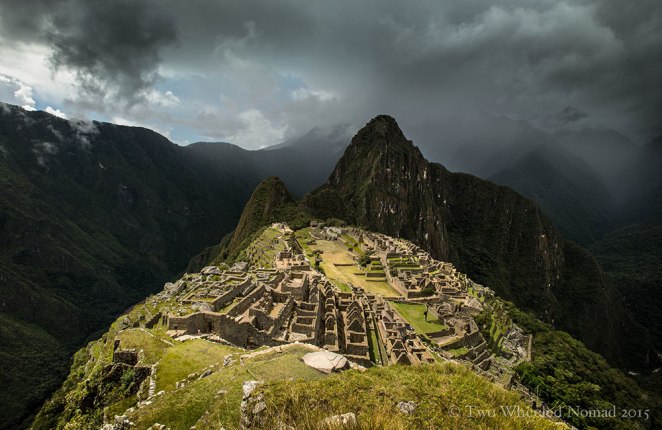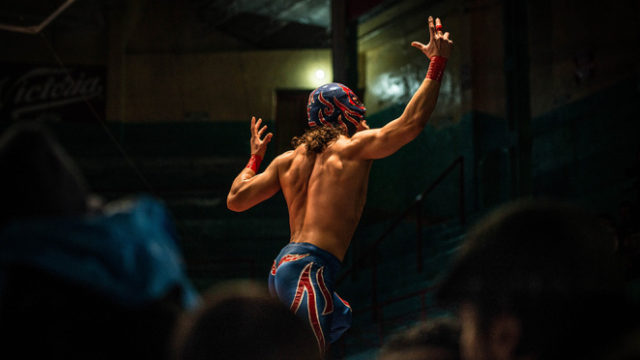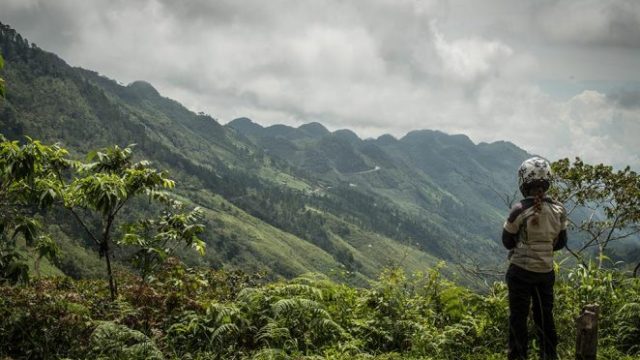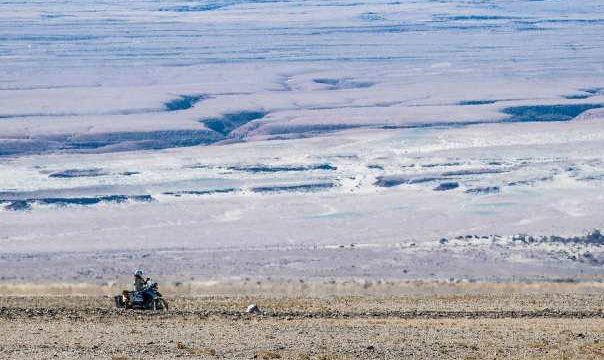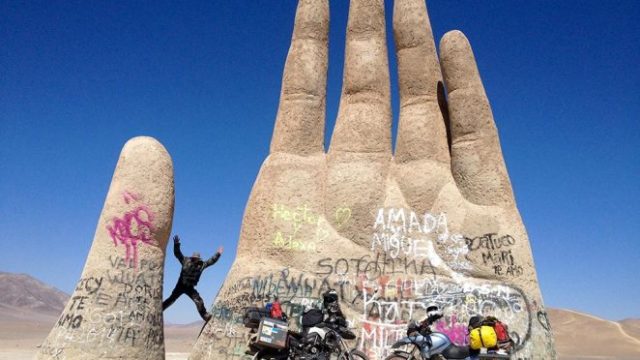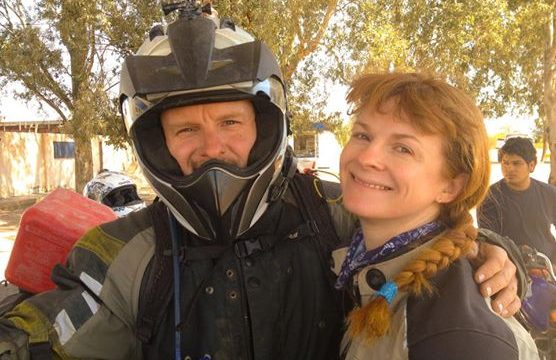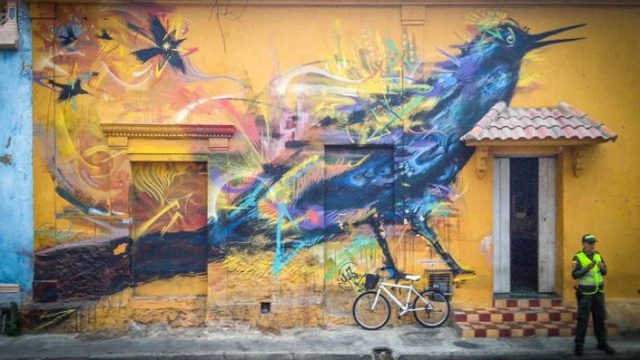Getting to Machu Picchu under our own steam was a conscious choice that worked fairly well. As opposed to opting for a four-day Jungle Trail package for example, which offered more bang for our buck. $200 US would’ve added in four high-energy activities on top of Machu Picchu but for us, spending our clock and cash riding to and visiting the iconic Inca ruins was paramount. Rushing our way through mountain biking when we bike practically everyday to then trek six hours with the day-trippers, after having hiked some of the best stomping ground in South America, didn’t overly appeal. The river rapids and zip lining would’ve been fun though. Still, this was about Machu Picchu and little else.

Our chosen route towards the great Inca city – so well publicized, documented and captured on film – made me mull over whether actually seeing Machu Picchu for myself might angle towards the anticlimactic, or may be remove some of the mystery surrounding it? I dared to hope that wasn’t going to be the case on the way out of Peru’s Inca capital, Cusco. Admittedly, the price to transport two of us: on two motorcycles, in a taxi, marching our out-of-condition feet on a railway ramble to lodge in a captive-audience area to then catch a bus up to the National Park, cost us several arms and aching legs.
In Peru’s rainy season, my mind soon turned to other matters when the Satnav shaved some mileage off highway 3S, and instead led us down an off road shortcut to Ollantaytambo. Namely, a mess of muddy tracks through a line of lofty hillside alongside River Vilcanota’s milky mocha waters. It wasn’t Dakar-level mud but it was muddy good fun for us. The Garmin saved us a whopping four miles off the journey. Isn’t it always the unexpected interruptions that add colour and texture to your day, or for us brown and wet, soft earth caked all over our bikes and bodies.

High up in the mountains on the way to Santa Maria, we stopped to take five. High in altitude but low in warmth, it was like a little Switzerland in the wintery Welsh Valleys of South America. But steeped in Inca heritage where wild rugged mountains rose to thousands of metres and in between them were hidden innumerable valleys, tiered full with terraces, streamlets, hiking and biking trails, and high elevation meadows overflowing with sprays of wildflowers, sheep and llamas.

I took a cursory glance and flopped in a tired heap next to my bike, zonked instantaneously while Jason surveyed the scene – cloud-mingled mist climbing up the mountainside like rising smoke. A farmer with his four year old daughter, Elena were curious enough to wander over, while shepherding his sheep with a handmade catapult to roam on the grass, not the road. Like so many children in South America, this little girl had a serenity that lay behind her dark brown eyes. Filthy from matted head to hard-skinned toes, she wore a brightly coloured croqueted bonnet tied beneath her chin, bore the odd rip and tear in her grubby clothing yet her hands and feet were warm to the touch.
Smiling brightly each time I made eye contact, I continued to convey interest in her. She stood on one spot, quietly fascinated by a broken, blue sparkly plastic earring, which held her attention as much as she did mine. Namely, I just wanted some interaction with this cute-as-a-button wee Peruvian. When I rifled through my panniers to produce biscuits and peanuts, Elena beamed when I put them in her mucky hands.
Having spent longer than anticipated on a wet, dirt road to Santa Maria, we followed suit the next morning to Santa Teresa. Ditching the bikes and dumping all but our day packs at Hostel Yacumama, we negotiated a ‘Don’t-take-the-biscuit’ bike fee and jumped in a minibus taxi from Santa Teresa to Hidro Eléctrica, the local Hydro electric power plant. Too frugal to pay the $42 US one-way train fare, we traipsed alongside the railway track for seven odd miles into Aquas Calientes. Jason suffered waives of sickness, doubled over now and again with stomach cramps and endured problems with his constitution, caught out from goodness knows what. He walked as though he was wading through treacle every step of the way. I carried the gear, felt royally unfit for the duration and to add laborious insult to unlucky injury, the afternoon unleashed a torrent of rain. The pair of us made a complete meal out of it.
The juxtaposed tiny town of Aquas Calientes – only accessible by train or on foot – is a jarring mix of ancient and modern. So great was the discord upon entering this sub-tropical jungle spot, we were hit first by the general reek of money – a line of plush hotels and fine jewelry stores – in parallel with a raging river running a fierce course of chocolate milk against lush green, monumentally neck-craning mountainside. The place was thriving on the wads of wonga from the purses and wallets of all and sundry that like us, wanted a spellbinding piece of Machu Picchu’s magic.
The jungle town is renowned to adopt a ‘We’ll never see you again’ mentality and vendors do their utmost to overcharge for every conceivable product and service available. When I began bartering for a café con leche, a cuppa coffee, the lady simply smiled and with a discernibly smug air informed me, “Yes but my milk is very, very fresh”. Mmn, I’ll milk Daisy’s udders myself if it’ll save me three quid. I prayed the Morris powers of persuasion would take effect, went in hard and negotiated down with a “Oh come oooon, you look like a very, very lovely lady who’ll be kind enough to offer a much nicer price”. The impulsive shimmy tagged on at the end seemed to put her slightly off kilter and she reluctantly agreed. Job done.

Come the dark, misty light of dawn, our 5.30am bus traversed the sharp switchbacks of the steep Carretera Hiram Bingham, up to Machu Picchu Park. Groggy from the fug of sleep, we alighted the bus and looked upon the gateway to the sacred grounds. Jason raised an eyebrow at me, which would have been pure Spafford had his features not resembled those of a sleep-ruffled ferret.
I stepped beyond the entrance and started on the ancient pathway. A thick belt of clouds and the high morning mist enveloped us, which gave the start of the day a damp, dull cast. Poncho doing its duty in the persisting rain, I tucked into a warm pastry for my 6.10am breakfast on the Inca bridge, while my mind’s eye imagined a totemic vestige of lost civilization – about as dreamlike as my day was likely to get. Reality gave me only Jason’s profile from behind, trundling along in front of me. Poor bloke, he felt as rough as a badger’s backside.
Mid-morning, the mist gave way before us and ragged grey curtains parted by their prow, which bathed the ruins in a soft, flickering light. It didn’t cease to amaze me that our ancestors had built such a triumph. I tried to wrap my comprehension around the number of steps that had been carved out of enormous pieces of rock and carried, piled and tiered to create the wonderment that is Machu Picchu. The sheer size of it filled my soul with a wowed quietness. Fathomlessly unknowable how a few hundred men simply pushed the rocks up inclined planes using stones with knobs on them to lever others into position. For this one still and silent moment of the day, everything in the world was at peace, locked in beauty. Verdant terraces emerged in every shade of green; emerald, olive and thyme. And sage, moss and myrtle. I couldn’t help but let my soul dance, breathing in the miracle of man’s work.
2,453 metres above sea level and nestled on a small hilltop between the Andean Mountain Range, the majestic lost city of the Incas soars above a bow of the rumbling Urubamba river precipitously below. The estate sits in a saddle between the two mountains Machu Picchu and Huayna (Wayna) Picchu, with a commanding view down two valleys and a nearly impassable mountain at its back. Located in semi-tropical highland, the area is known as the ‘eyebrow of the jungle’.
Part of the Vilcabamba Batolite formation, Machu Picchu is part of a mass of igneous rock, 250 million years old. The most common stone found in the region is a greyish-white granite, and because of its high quantities of quartz, mica and feldspar makes it relatively easy to shape. And so the Andean masons proved, who made light work out of utilising such a magnificent building material. Built in 1450, many archaeologists believe that Machu Picchu was constructed as an Incan retreat for the emperor Pachacuti; an estate for him and his royal court, or panaca, to relax, hunt and whimsically entertain guests. Separated into three areas – agricultural, urban, and religious – the Incan built structures were arranged so that the function of the buildings matched the form of their surroundings.
The city in its heyday had a water supply from natural springs on highly developed irrigation systems that couldn’t be blocked easily and aqueducts that took advantage of the natural slopes. Splashing fountains also abounded in its time. Masterpieces of hydraulic engineering brought fresh water into buildings while other channels removed waste. The surrounding hillsides were cultivated with fertile soil terraces, not only to provide more farmland to grow crops, but to steepen the slopes which invaders would have to ascend. Many believe sufficient to feed the population of a guesstimated 1,200 four times over. The terraces also reduced soil erosion and protected against landslides. A time of exulting in a period of collective brilliance, wouldn’t you agree?

The lower areas contained buildings occupied by farmers and teachers, and the most important religious areas were located at the crest of the hill, overlooking the lush Urubamba Valley a world below. Machu Picchu was utilised by the Inca as a secret ceremonial city with an observatory bound in astronomical and equinoctial importance. The rising and setting of the sun when seen from certain locations within the estate aligns neatly with religiously significant mountains during solstices and equinoxes. All that said, two high-altitude routes from Machu Picchu go across the mountains on the 110 kilometre Inca Trail back to Cusco; one through the sun gate, and the other across the Inca bridge. Both could be blocked easily, should invaders approach along them. Regardless of its original purpose, it’s strategically located and readily defended.
Having paid an additional $10 US in advance, we started up Wayna Picchu’s set of rough-hewn stone steps, the site’s sacred and loftiest peak at 2,693 metres. In Quechua, Wayna Pikchu means ‘young or young man’ and ‘pyramid’. Partway up the northern side is the Temple of the Moon inside a cavern, allegedly a goddess’ cave. Lichen spangled stones dotted over the mountainside, they were steep in parts and the resident morning mist left them slippery. The views from the top of Wayna Picchu gave rise to a further acute and amazing moment, well worth the slog of an ascent. Oddly though, the strongest and probably most profound view of the Inca estate was ascertained when we entered the park, not atop its tallest peak.
Shamanic legends tell that when a sensitive person touches their forehead to Machu Picchu’s Intihuatana stone it opens their vision to the spirit world. I wondered if a similar effect transpired when Jason, still feeling dreadful with diarrhea, lost his footing half way down Wayna Picchu and plummeted 25 feet, grating against its sheer face. Oh my giddy ants, “JASON!”, I shouted as I watched him, his forehead and everything else besides descend through an eternity of jungle bush and trees. My heart seemed to sink right through my body and into the muddy earth.
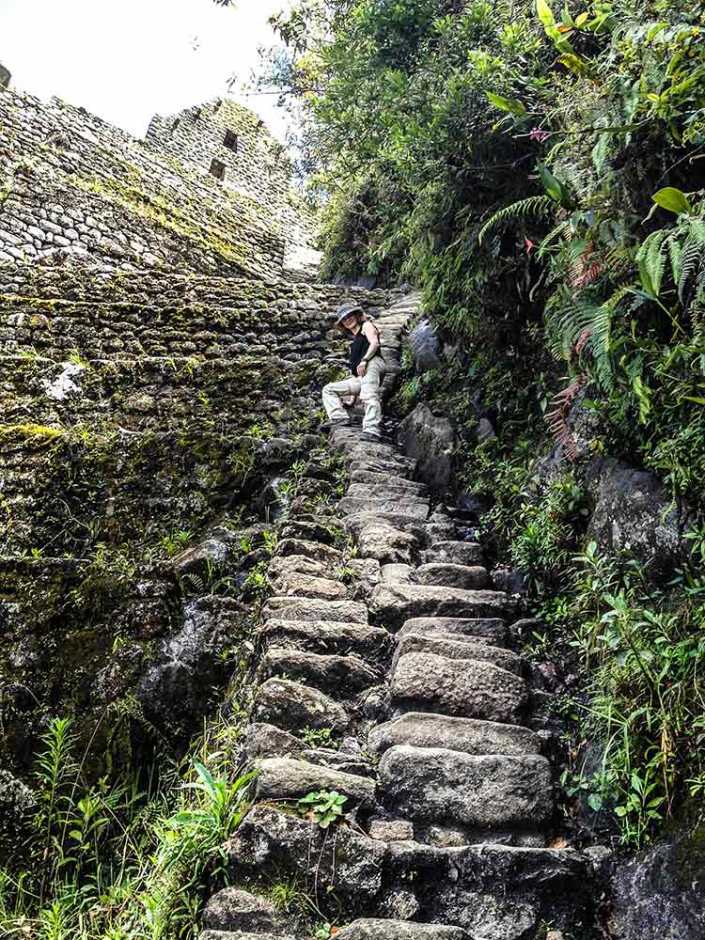
Down a level, there was a chap with his arms outstretched waiting to soften Jason’s landing. It was almost comical when he grabbed a dishevelled Jason on impact, removed his dirtied cap and poured litres of water over his mud smudged head. Drenching him back to a refreshing reality, he enquired with a concerned sincerity, ‘Are you alright?’ More or less but you’ve just washed away his vision into the spirit world. Stunned to the root of my soul, I was in a shaken state of disbelief having witnessed him fall, and consumed with relief that it was onto a lower ledge rather than an abyss over the precipice. Somehow, settling on his jammy feet. Festooned in the mountain’s natural debris but stalwartly in one piece on terra firma, I thanked the Inca deities a thousand times over. Heart hammering at my chest, I cried a cathartic flood but afterwards supposed you should never discount the wonder of your tears. They can be healing waters and a stream of joy. Sometimes, I guess they’re the best words the heart can speak.
In 1874, by order of the Peruvian Government, a German cartographer Herman Gohring mapped the region, employing the names Machu Picchu and Wayna Picchu for the first time in the modern era. Other explorers and locals would in turn find Machu Picchu prior to Hiram Bingham’s famous rediscovery, which brought word of the ruins to the outside world in 1911. Bingham, a North American History professor, came to South America to research the military campaigns of the liberator Simon Bolivar. Having taken an interest in Incan culture, Bingham journeyed to Cusco with a sergeant, his translator.
While travelling through the Sacred Valley of the Incas along the Urubamba River, they stopped at a place in the Hacienda Cutija. There they met a farmer named Melchor Arteaga. Arteaga gave the explorers information about the existence of some ruins at the top of what they cited an ‘Old mountain’ (Machu Picchu) and received a one coin tip for his trouble. When Bingham reached the mountain, he found two families farming its steep sides on the terraces. It was an 11-year old child, the son of one of the families, who led the explorers into the archaeological remains. On 24 July 1911, they glimpsed their first look at the ‘Royal Tomb’, the ‘Principal Temple’, and at last, the ‘Temple of the Three Windows’. Since then, that date is known as the ‘Day of the Scientific Discovery of Machu Picchu’. Interestingly, letters written to Bingham’s son were revealed sometime later by the son divulging how Bingham overdramatised the difficulty of journeying to and the discovery of Machu Picchu, quite sensationally in fact so as to no doubt increase his kudos, heroic status, accredited fame and popularity.

Glancing out from the Funerary Rock Hut on all the temples, patchwork quilt fields, pristine terraces and baths seems to take you to another time. Blending in with the hillside itself, the lost city created a seamless and elegant green paradise, making Machu Picchu a ‘must see’ of Peru for me. Although Jason would urge you to factor in the cost and time to get there as well as the desired duration to experience it. It was one of the most beautiful and enigmatic ancient sites on which I’ve ever locked my eyes. Shrouded in as much legend, myth and sacredness as there was mist and cloud, the site was in a remarkable state of preservation.
The structures, carved from granite of the mountain top are wonders of both architectural and aesthetic genius. Many of the building blocks weigh 50 tonnes or more yet are so precisely sculpted and fitted together with such exactitude that the mortarless joints will not permit the insertion of a piece of paper. It’s perhaps one of the most petite but most revered and extraordinary cities ever visited, invisible from below and completely self-contained.
Wearily, we walked from Machu Picchu back to Aquas Calientes. A long but easy enough descent although Jason still managed to trip up a couple of times. That evening he took a perfunctory shower and peeled into bed; the sounds of gentle snoring soon filled the air. I was lead-weight exhausted, a myriad of emotions having taken their toll. My eyes had a will of their own, they closed and I slipped into a deep and comforting sleep.
The trail we took back along the railway the following morning started stiffly for our worn-out calves. My legs had all but fallen into abeyance. All that was required was an action, a cold start, instant and brutal as beginnings so often are. The seven miles somehow managed to soar inside two hours, it’d taken nearly double that to walk the same on the way there. The air was filled with butterflies, floating like confetti: oranges, yellows, iridescent blues and some fluttering transparent wings while others spanned Jason’s hand. Mindful to such moments, I was thrilled we’d walked and not trained it back.

The dirt road near our hostel had dried and dew sparkled everywhere, diamond-like tears of the early morning reflecting the sun’s warmth. All looked rosy until encountering a magnitude of hairy moments back to Santa Maria. Imprudent minibus drivers took blind hairpin bends as if they were cornering on rails and turned it into an exercise like a date with the firing squad. One rather reckless driver got a mouthful off Jason while I checked my limbs were intact; good job there was a distinct language barrier, which kept the content ambiguous and tone crystal.
So, was Machu Picchu worth it? As a small but significant part of one of the largest and most sophisticated empires in the entire pre-industrial world, a Peruvian Historical Sanctuary and World Heritage site, Machu Picchu is equal in beauty to any culture of the old world. “An absolute masterpiece of architecture and a unique testimony to the Inca civilization”, as UNESCO so aptly put it.

